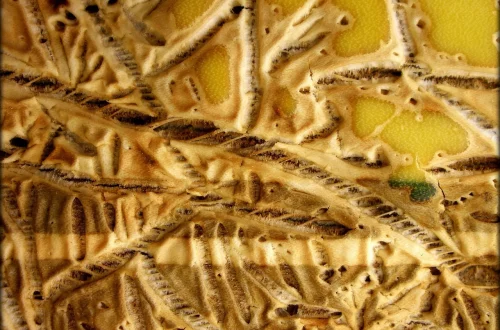
Understanding Swollen Paw Pads in Dogs: Causes and Solutions
Understanding the condition of swollen paw pads in dogs can be a crucial aspect of pet ownership. Paw pads serve as a protective barrier for a dog’s feet, shielding them from rough terrains, extreme temperatures, and potential injuries. When these pads become swollen, it often indicates an underlying issue that needs attention. Pet owners may notice their dogs limping, licking their paws excessively, or showing signs of discomfort when walking. Understanding the symptoms, causes, and potential treatments for swollen paw pads is essential for ensuring a dog’s overall health and well-being.
Paw pad swelling can occur due to various factors, including allergies, infections, injuries, or even certain medical conditions. Dogs are naturally curious creatures, often exploring their environment with their paws, which can lead to exposure to irritants or harmful substances. Therefore, recognizing the signs of swelling and understanding the potential causes can help pet owners take the appropriate steps to address the issue. Being informed can also empower owners to seek veterinary care when necessary, ensuring their furry companions receive timely and effective treatment.
In this article, we will delve deeper into the various aspects of swollen paw pads in dogs, exploring what can lead to this condition and how to effectively manage it.
Common Causes of Swollen Paw Pads
Swollen paw pads in dogs can arise from a wide range of causes. One of the most common culprits is allergies. Dogs can be allergic to a variety of substances, including pollen, dust mites, and certain foods. When a dog comes into contact with an allergen, their immune system may react, leading to inflammation and swelling in the paw pads.
In addition to allergies, infections are another significant cause of swollen paw pads. Bacterial or fungal infections can develop due to cuts or abrasions on the paw pads, leading to swelling, redness, and sometimes discharge. These infections can be painful and may require veterinary intervention to treat effectively.
Another common cause is trauma. Dogs can injure their paw pads by stepping on sharp objects like glass or thorns, or by walking on hot surfaces that can cause burns. Such injuries can lead to swelling as the body responds to the trauma.
Moreover, conditions such as pododermatitis, an inflammation of the skin on the paws, can also result in swollen pads. Pododermatitis can be caused by various factors, including allergies, parasites, and foreign bodies lodged in the paw.
Lastly, underlying health issues, such as autoimmune conditions or endocrine disorders, can play a role in the swelling of paw pads. These systemic conditions may require comprehensive treatment and management strategies.
Understanding the root cause of the swelling is essential for effective treatment. Pet owners should observe their dogs closely and consider any changes in behavior, diet, or environment that may have occurred prior to the swelling.
Recognizing Symptoms Associated with Swollen Paw Pads
Identifying swollen paw pads is just one part of addressing the issue; recognizing accompanying symptoms can help in diagnosing the problem more effectively. When a dog’s paw pads are swollen, pet owners may notice various signs that indicate discomfort or pain.
One of the most noticeable symptoms is limping or reluctance to walk. Dogs may favor one paw over another or avoid putting weight on the affected leg altogether. This change in gait can be alarming for pet owners and is often accompanied by visible swelling and warmth in the paw pad.
Excessive licking or chewing of the paws is another common behavior exhibited by dogs experiencing swollen pads. This behavior can exacerbate the problem, leading to further irritation and potential infections. Pet owners should monitor their dogs and try to prevent them from licking their paws excessively.
In some cases, dogs may also show signs of distress, such as whining or whimpering, especially when the affected paw is touched or examined. Changes in behavior, such as increased restlessness or hiding, may also signal that a dog is in pain.
Additionally, pet owners should be on the lookout for any changes in the appearance of the paw pads. Swollen pads may appear red, bruised, or even develop blisters or sores. If there is any discharge, such as pus or blood, it is crucial to seek veterinary care immediately, as this can indicate a more serious infection.
Recognizing these symptoms can aid in early intervention, which can often lead to more effective treatment and a quicker recovery for the dog.
Treatment Options for Swollen Paw Pads
Once the cause of swollen paw pads has been identified, treatment can begin. The approach to treatment will depend on the underlying issue, but there are several common strategies that veterinarians may recommend.
For allergic reactions, antihistamines may be prescribed to help alleviate symptoms. If the allergy is food-related, a dietary change might be necessary, and the veterinarian may recommend a hypoallergenic diet to prevent future reactions. Environmental allergies may require regular cleaning to reduce exposure to allergens, such as dust and pollen.
In cases of infection, antibiotics or antifungal medications are often necessary. The veterinarian may also clean the affected area to remove any debris and promote healing. It’s essential to follow the prescribed treatment plan closely to ensure the infection is fully resolved.
For injuries, treatment may involve cleaning the wound, applying topical medications, and keeping the dog from licking or chewing on the affected area. Protective booties can also be used to shield the paw while it heals.
In more severe cases where underlying health issues are present, a comprehensive treatment plan may be required. This could include medications to manage the underlying condition, regular veterinary check-ups, and possibly referrals to specialists for advanced care.
Always consult with a veterinarian before attempting any treatment at home, as some remedies may not be suitable for all dogs and could potentially worsen the condition.
**Disclaimer**: This article is for informational purposes only and should not be considered medical advice. Always consult your veterinarian for health concerns regarding your pet.




